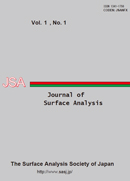Volume 24, Issue 1
Displaying 1-5 of 5 articles from this issue
- |<
- <
- 1
- >
- >|
Review
-
2017 Volume 24 Issue 1 Pages 2-24
Published: 2017
Released on J-STAGE: July 18, 2018
Download PDF (5309K) -
2017 Volume 24 Issue 1 Pages 25-35
Published: 2017
Released on J-STAGE: July 18, 2018
Download PDF (720K)
Technical Report
-
2017 Volume 24 Issue 1 Pages 36-46
Published: 2017
Released on J-STAGE: March 01, 2018
Download PDF (597K) -
2017 Volume 24 Issue 1 Pages 47-55
Published: 2017
Released on J-STAGE: March 01, 2018
Download PDF (1066K)
Extended Abstract
-
2017 Volume 24 Issue 1 Pages 56-60
Published: 2017
Released on J-STAGE: March 01, 2018
Download PDF (709K)
- |<
- <
- 1
- >
- >|
